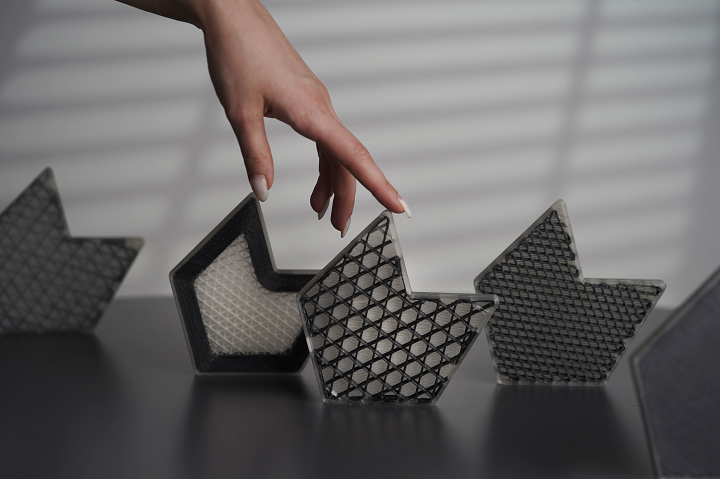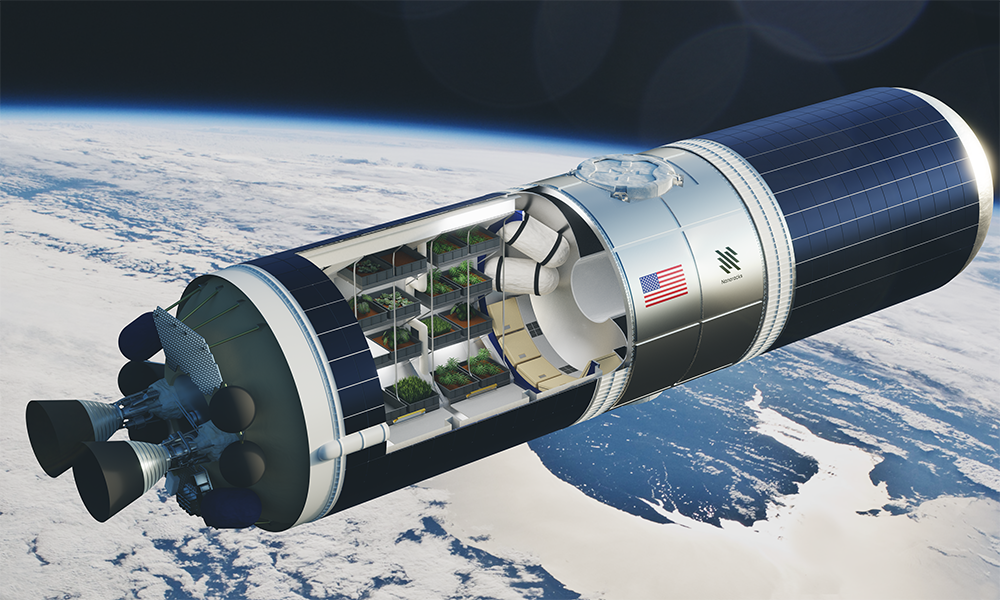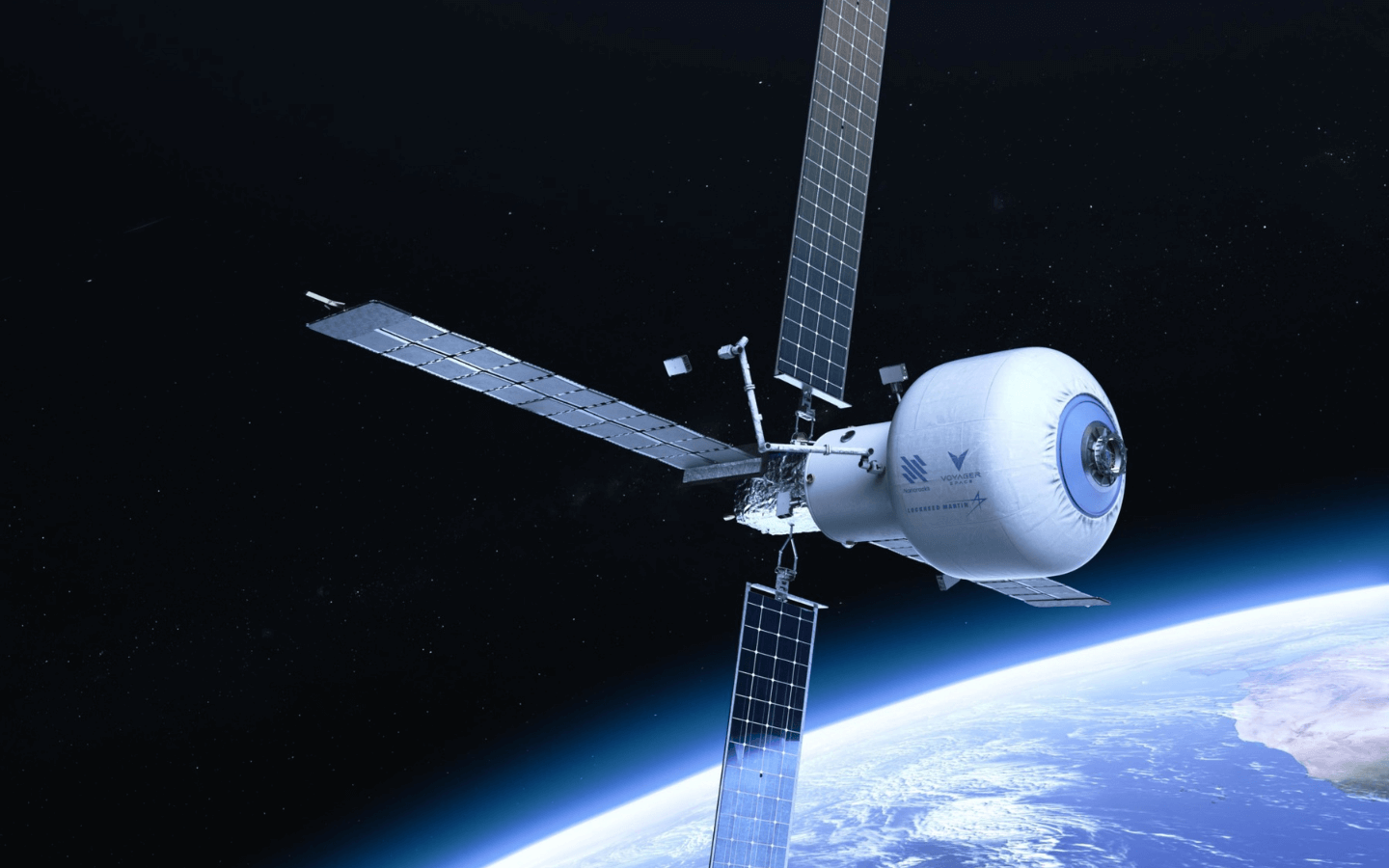A new deal between carbon fiber 3D printing startup Anisoprint and Nanoracks––the company behind the world’s first free-flying commercial space station set to open in 2027––could help draft the first roadmap for deploying 3D printing in space. According to the memorandum of understanding (MoU), Anisoprint, together with Nanoracks’ Space Outpost Europe program, will aim to develop a zero-gravity composite manufacturing system.
For the task, the duo will work towards demonstrating and validating Anisoprint’s continuous fiber coextrusion (CFC) 3D printing technology capacities in orbit. The brand’s proprietary science-based version of continuous fiber 3D printing, called CFC, uses two inputs, one for reinforcement fiber and one for feeding thermoplastic, and one output, to create optimized structures made out of composite materials.
 Examples of applications created with Anisoprint technology. Image courtesy of Anisoprint.
Examples of applications created with Anisoprint technology. Image courtesy of Anisoprint.As part of the deal, Nanoracks will also strengthen Anisoprint’s role as a space technology developer and help it become part of the low Earth orbit (LEO) and lunar economy.
Private space companies are striving to build infrastructure in space. As a new decade of in-space infrastructure has begun, companies like Nanoracks want to ensure they have the technologies that will serve this purpose. But creating a vibrant LEO economy needs to build on the work done to date by the International Space Station (ISS), and Nanoracks has been providing a wide range of services to the orbiting station since 2009, including over 1,300 research payloads and small satellites.
Since the company is also engaged in developing orbital infrastructure, it says it will soon own and operate its own commercial space stations, including the highly anticipated crewed commercial orbital platform Starlab and several outposts (which will be repurposed space junk turned into agile, autonomous space platforms). But opening the doors to new commercial ventures never before seen in space means Nanoracks needs to partner with other innovative companies to lead the way in this new race to space. For example, with Anisoprint, Nanoracks has the opportunity to tap into microgravity manufacturing.
“We are at the stage of formation of LEO and lunar economy. There has been explosive growth in international commercial space activity. I am confident that we will achieve our goals and contribute a value chain to the off-Earth economy,” said Dmitrii Prokopiuk, Head of Space Development at Anisoprint in a LinkedIn post. “Our cooperation with Nanorack Space Outpost Europe will give a strong impetus to the further development of our project to transfer 3D printing technology from Earth to space for in-orbit servicing and manufacturing (IOSM) and further to the Moon to use for in-situ resources utilization (ISRU).”
Just two months before signing the deal with Nanoracks, Anisoprint was one of five startups selected for the European Space Resources Innovation Centre (ESRIC) ’s first global Startup Support Programme (SSP) and began their pre-incubation in April 2022. Targeting terrestrial and space applications, the SSP, managed jointly with the European Space Agency (ESA), aims to support early-stage startups in the space resources sector, develop their business models, attract their first customers, and secure their first investments.
The pre-incubation phase, which lasts three months, allowed Anisoprint to validate technical concepts for developing CFC 3D printing technology to build tools, components, repair parts, and structural elements made of composite materials in conditions of weightlessness and low gravity.
Since Anisoprint was selected for pre-incubation in ESRIC’s SSP to adjust continuous fiber 3D printing technology for microgravity conditions, the team has made great strides toward expanding the resources network. Moreover, the new deal is described by Prokopiuk as the next step, deploying the technology to orbit together with Nanoracks Space Outpost Europe to demonstrate and validate how it functions.
 Nanoracks’ outpost program. Image courtesy of Nanoracks.
Nanoracks’ outpost program. Image courtesy of Nanoracks.The Luxembourg hardware OEM says it supports the development, extraction, and use of space resources. In fact, within the private space industry, many businesses are working out the logistical elements of in-space manufacturing, and 3D printing is slated to be the key to solving numerous current challenges.
Considering that the supply of spare parts and components from Earth is expensive and time-consuming, there is a need for in-space manufacturing technologies. Even though creating the manufacturing facilities and materials that will speed up space exploration will not be easy, several promising technologies boost interest in the on-site production of parts and components.
According to Anisoprint and Nanoracks, 3D printing would minimize delivery costs and shape limitations while reducing the number of delivery missions. Furthermore, Anisoprint states that its patented CFC technology creates zero waste which is environmentally efficient and does not increase the amount of space debris. In addition, it is a form of fully automated manufacturing that does not require manual labor.
 Starlab the planned LEO (Low Earth Orbit) space station designed by Nanoracks for commercial space activities. Image courtesy of Nanoracks.
Starlab the planned LEO (Low Earth Orbit) space station designed by Nanoracks for commercial space activities. Image courtesy of Nanoracks.Veronica La Regina, Director of Business Development at Nanoracks Europe points out that “with our plans to develop orbit stations and other space facilities to serve the market needs at the best, it is getting more and more crucial, the role of these innovative in-orbit manufacturing machines. We are looking forward to experiencing the CFC 3D-printing capabilities in our portfolio.”
Anisoprint says it is eager to start working on the R&D team roadmap for the endeavor and that Luxembourg provides vital support to devise unique, innovative solutions that satisfy the needs of the space sector and secure the future orbital economy.
Subscribe to Our Email Newsletter
Stay up-to-date on all the latest news from the 3D printing industry and receive information and offers from third party vendors.
You May Also Like
3D Printing News Briefs, April 13, 2024: Robotics, Orthotics, & Hypersonics
In 3D Printing News Briefs today, we’re focusing first on robotics, as Carnegie Mellon University’s new Robotics Innovation Center will house several community outreach programs, and Ugogo3D is now working...
Rail Giant Alstom Saves $15M with 3D Printing Automation Software 3D Spark
3D Spark has entered into a three-year deal with the rail giant Alstom. Alstom, a transport behemoth with annual revenues of $16 billion, specializes in the manufacture of trains, trams,...
Meltio Expands Global Reach with New Partnerships in the Americas and Europe
Spanish 3D printing manufacturer Meltio has expanded its sales network across the globe. With the addition of three new partners in the United States, Brazil, Argentina, and Italy, Meltio aims...
3D Printing Webinar and Event Roundup: April 7, 2024
Webinars and events in the 3D printing industry are picking back up this week! Sea-Air-Space is coming to Maryland, and SAE International is sponsoring a 3D Systems webinar about 3D...































